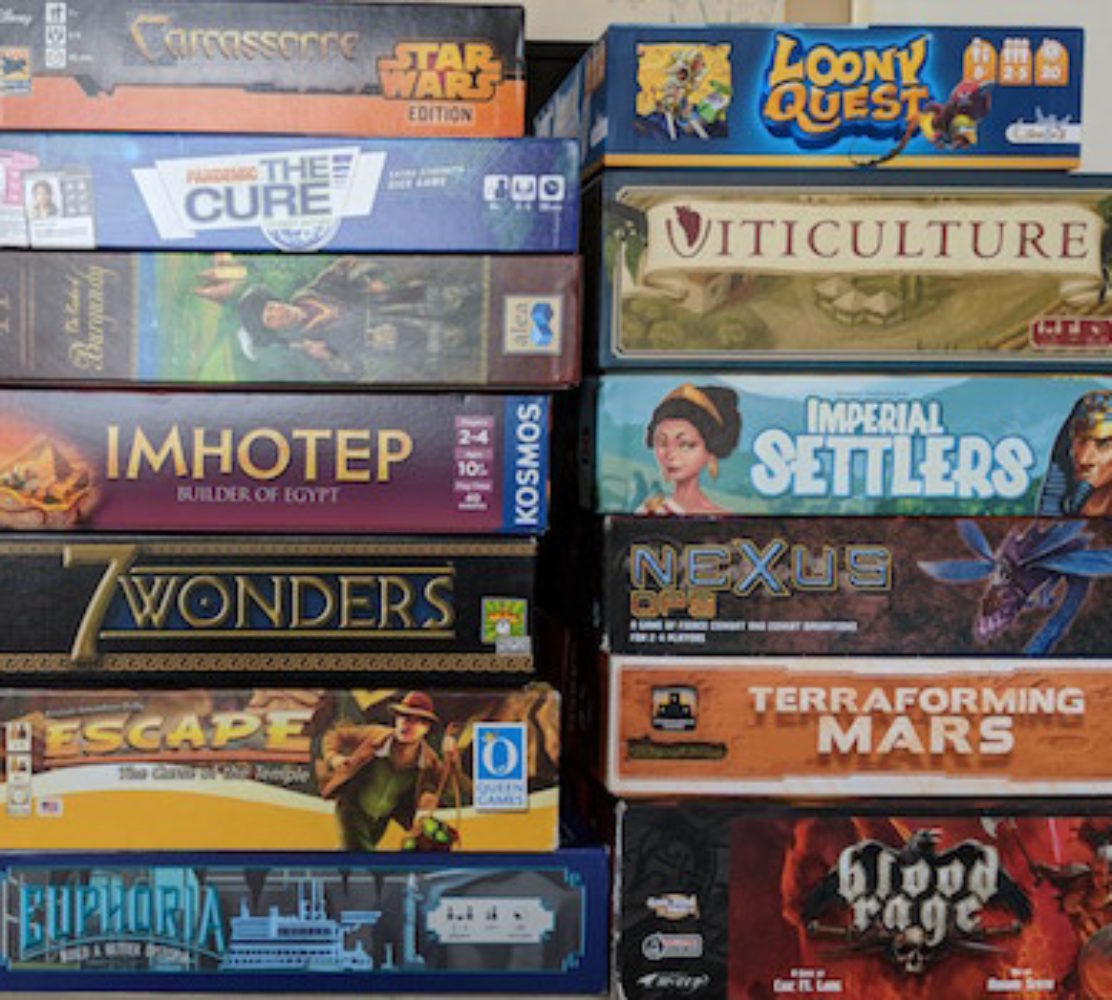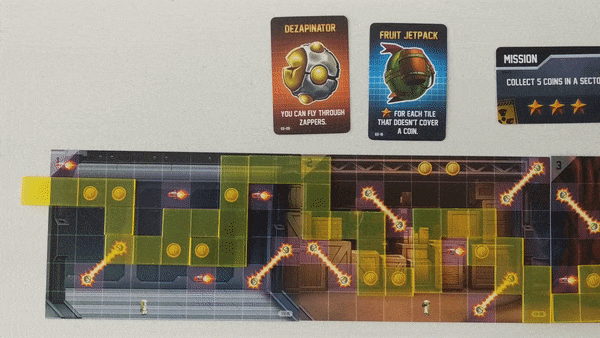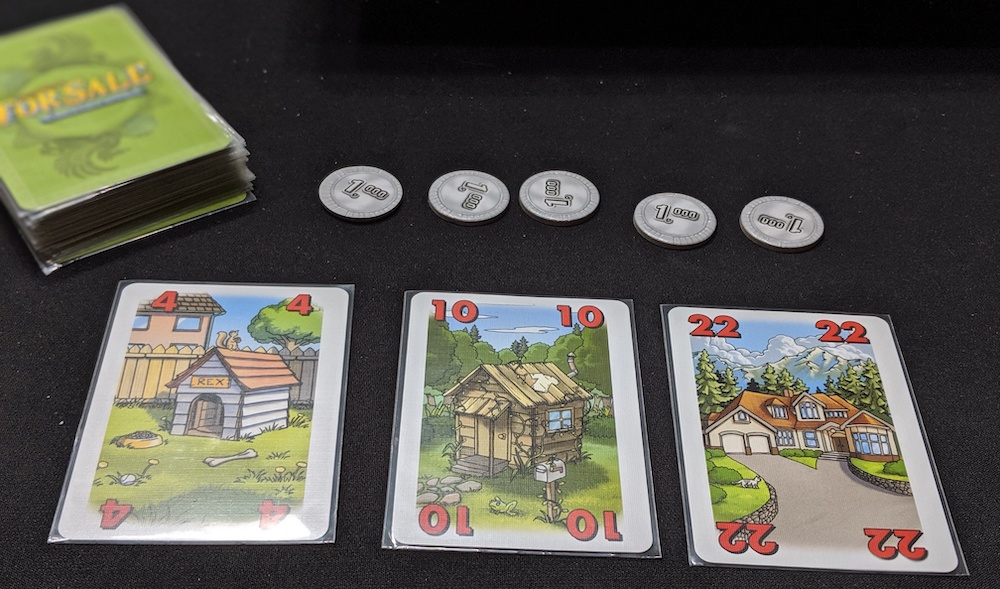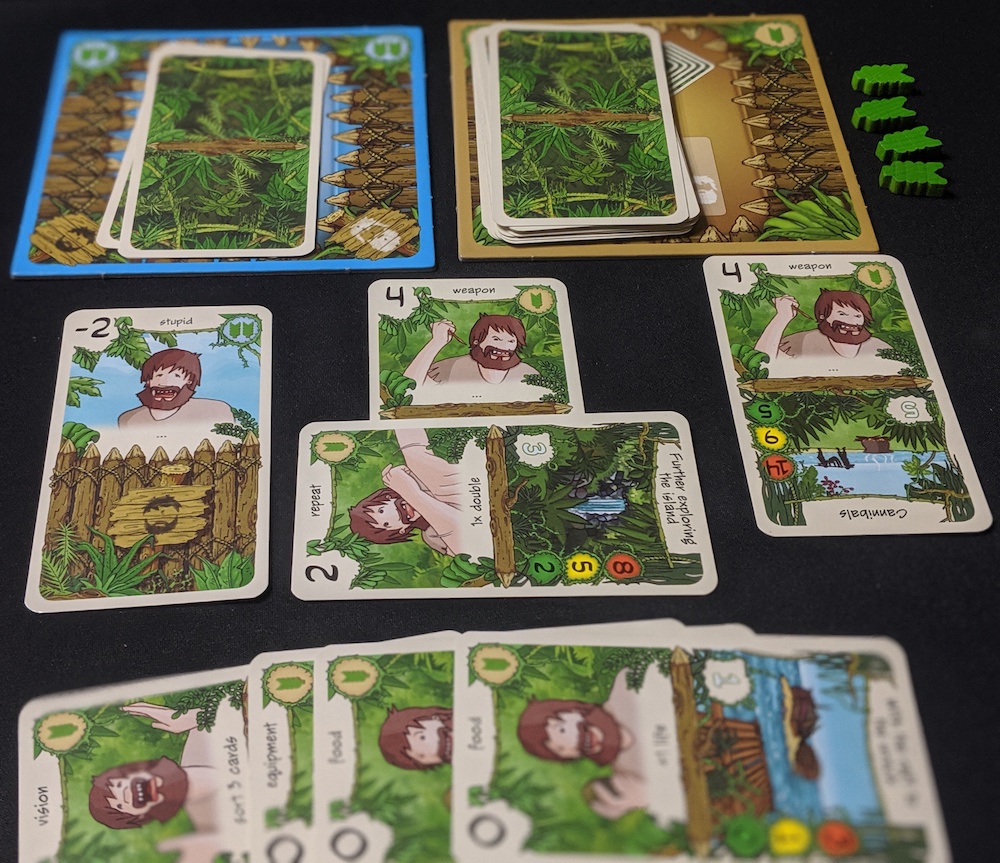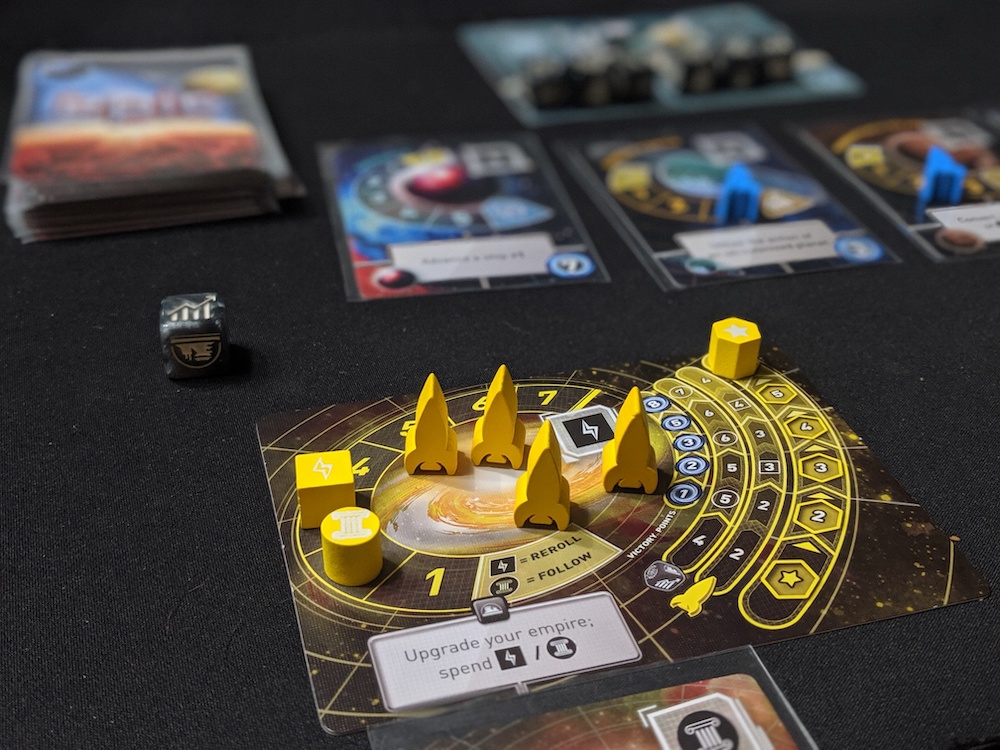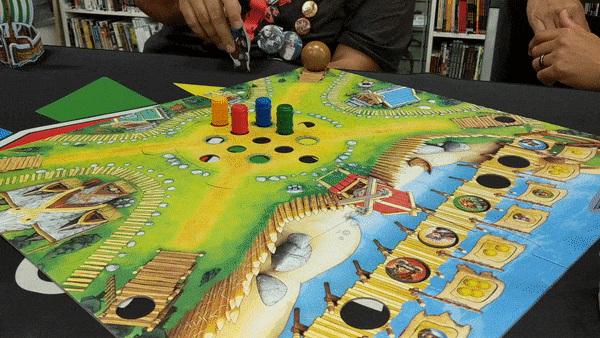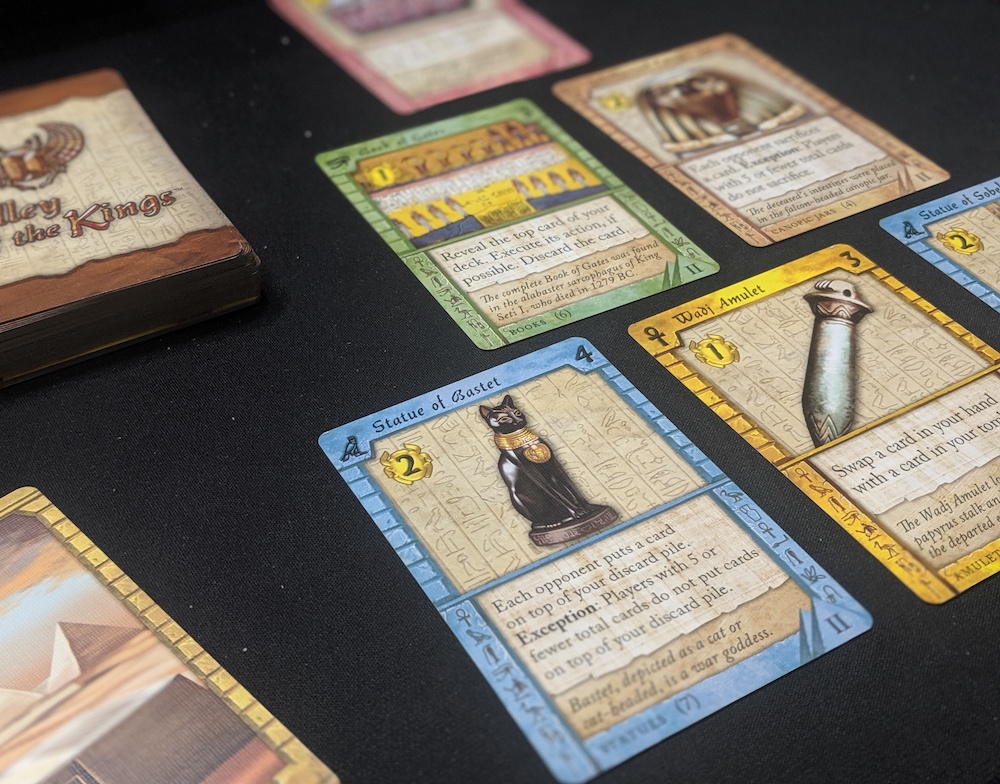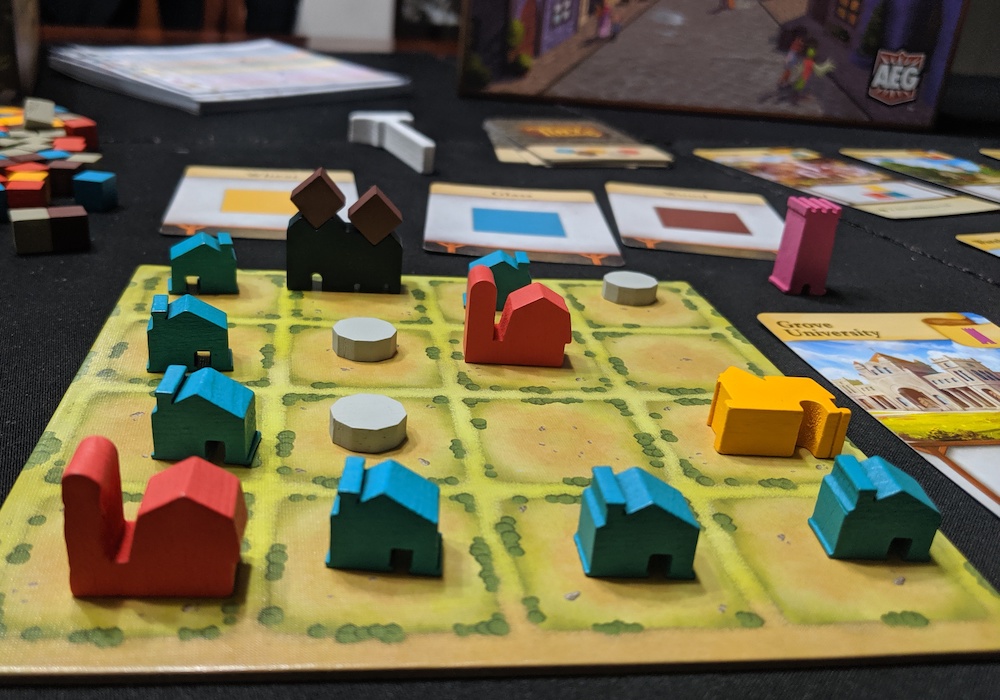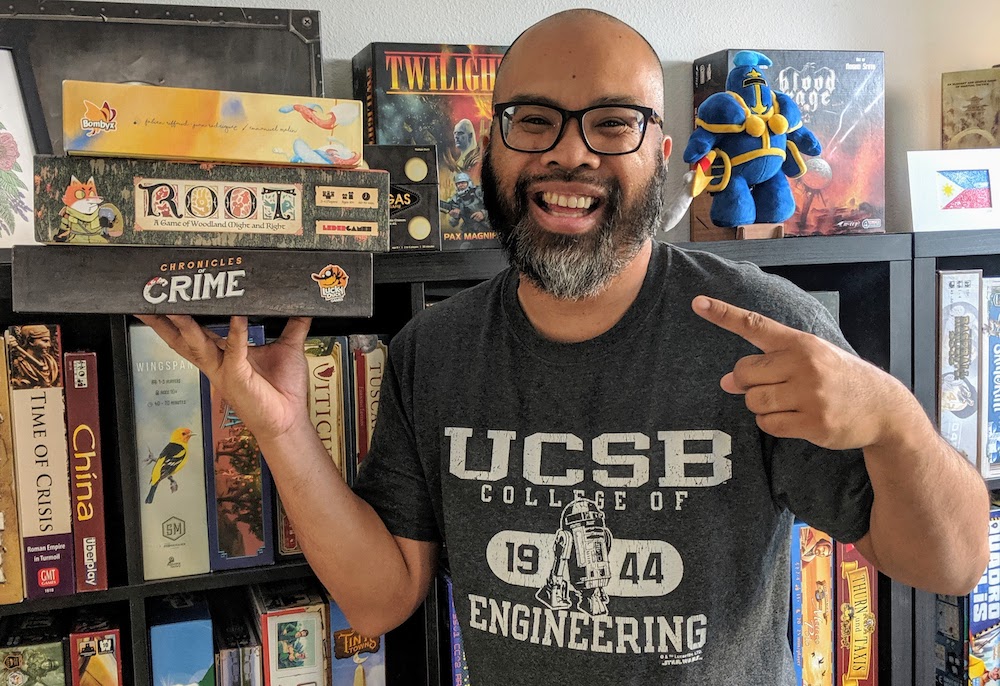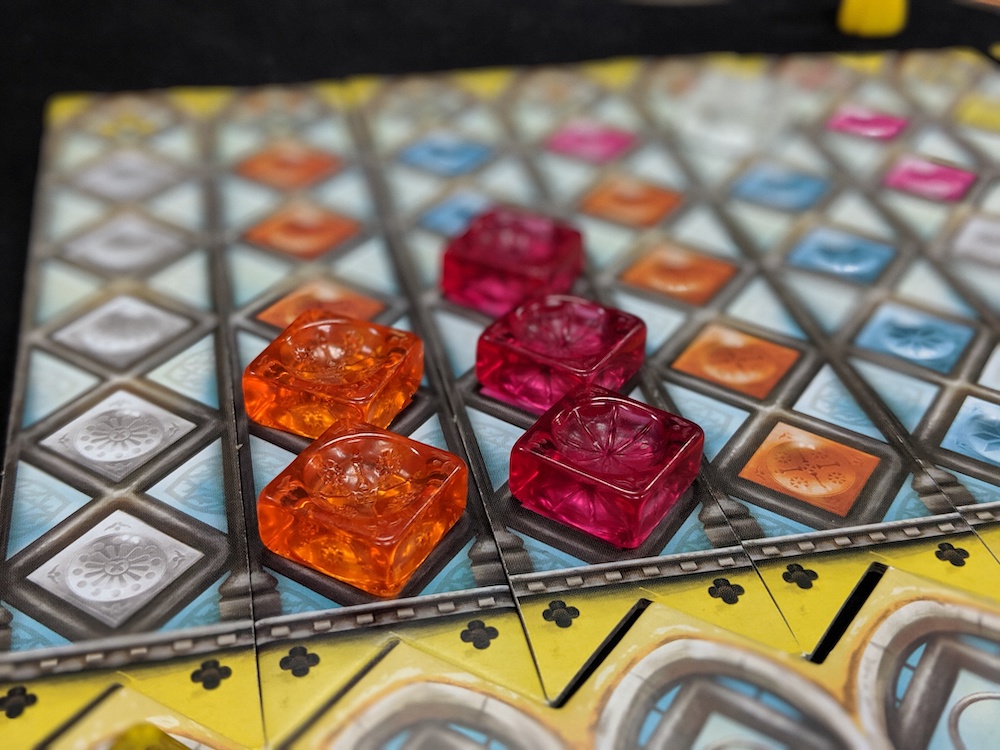I’m posting about a game every day in September! Here’s a link to yesterday’s post.
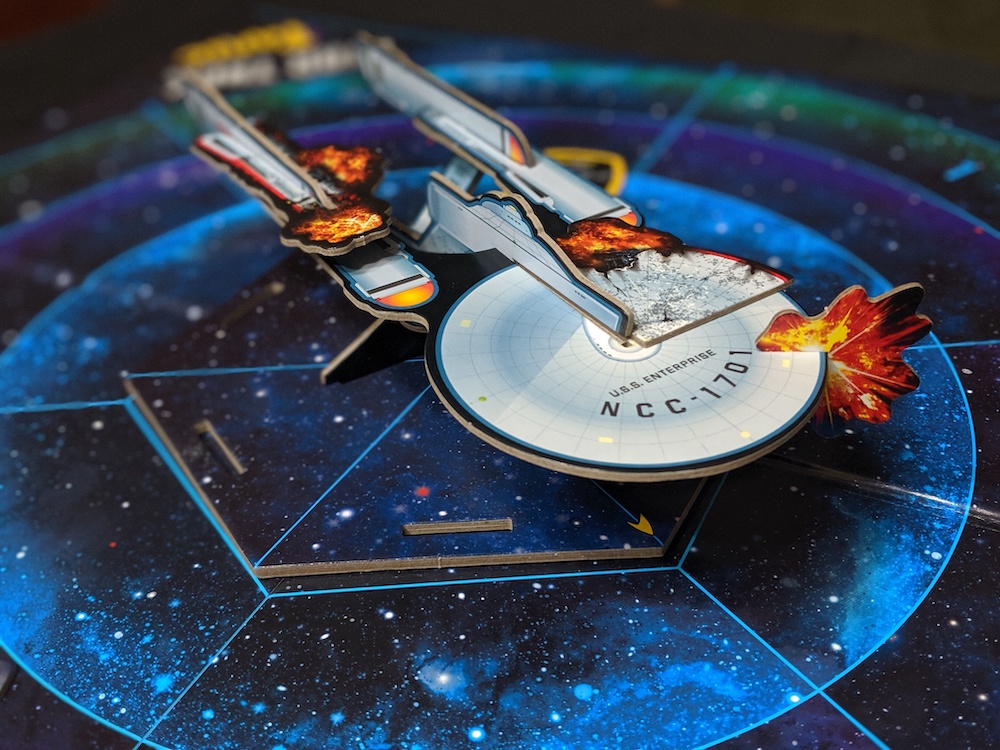
My dad introduced me to the original Star Trek series when I was a kid and I’d catch reruns whenever they were on Channel 13 in L.A., igniting my love of sci-fi that still exists today. I didn’t understand it at the time, but I was watching a series about a better tomorrow; a future full of wonder and hope, with technology being a part of how humanity solved (and caused) its problems.
It’s this glimpse into the future that still appeals to me. You can have your orcs and goblins in those decaying dungeons; gimme light-speed journeys to different worlds and epic space battles any day of the week, plus twice on Sunday.
Thematically, Star Trek Panic hits on all of the right notes for me. It’s a re-theme of Castle Panic (an early favorite of mine when I got into the hobby) and based on the original Star Trek, which is what I grew up with. And while the game is more space battle than anything the TV show ever got into, it’s still nice to see all of the call-backs to that original series.
Since Star Trek Panic is a cooperative game, it’s easy to solo. But it’s not an easy game, unlike the original Castle Panic. I reviewed it for Geek & Sundry so check out that link for more detailed info. I loved how they ratcheted up the difficulty in this version of the game. Here, you’ll have to complete missions in addition to clearing the bag full of baddies. It’s all tied wonderfully into the original series, with missions like The Trouble With Tribbles and Space Seed.
Tonight I solo-ed a game playing Sulu and Kirk. My only complaint about the game is that for this weight (gateway/gateway plus), the game is about 30 minutes too long (a full game usually takes 90 minutes). So I decided to see if I could beat two random missions, which I did in about 45 minutes.
Or maybe I didn’t. It’d been awhile since I’d played and I realized I missed a few rules while I was playing. I was already halfway into the game and didn’t want to start over so I decided to just put an asterisk if I managed to win. I failed my first mission, but recovered to complete the next two, as Sulu’s move-twice-per-turn ability came in handy and worked well with Kirk’s play-a-mission-card-and-draw-two-more ability.
The Enterprise took a lot of damage (as it always does in this game) and I won* tonight, despite (thanks to?) a few rules mistakes. Until my next game I’ll enjoy the win*, live long, and prosper.
